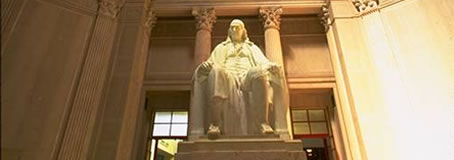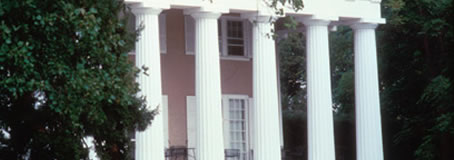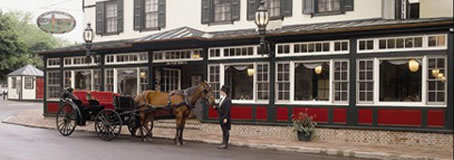Law Firm Web Sites -- The Good, The Bad, The Ugly
replica watches This article was published by The Legal Intelligencer on April 18, 2006.
by Jim Austin
As current and potential clients, recruits and other important audiences increasingly used the Internet as a primary information source in the past decade, law firms lavished more attention and more dollars on their Web sites. The result, according to a prominent marketing consultant, has been better Web sites – but also an increase in the number that look and feel the same.
"What law firms are trying to do is differentiate, but do it without really being different," Micah U. Buchdahl told the Delaware Valley Law Firm Marketing Group at its March 21 meeting. "That’s a very difficult challenge. Law firm Web sites in general are much better than they used to be, but most firms are still finding it very hard to truly differentiate themselves."
Buchdahl, a Pennsylvania-licensed attorney and president of the law marketing firm HTMLawyers, Inc., is proprietor of Internetmarketingattorney.com. He presented a sneak peek at his popular Internet Marketing Attorney Awards, his biannual review of the NLJ 250 Web sites, and his "Nifty 50" roundup of trend-setting legal Web sites.
From reviewing sites over a decade, several trends are apparent, Buchdahl said:
Better Design. Fewer firms are using "splash" pages – animated graphics or Flash presentations with little to no content. Splash pages increase download times, confuse search engines and can discourage visitors looking for content. Also, firms are moving away from tired legal clip art – columns, scales, briefcases, etc. The decrease in splash pages and big, boring graphics also lets firms make better use of the real estate on their home pages for constantly changing content, to highlight big news and upcoming events, and to tie print advertising campaigns to the firm’s Web site.
Scaling Back – In the high-flying early years of law firm Web sites, firms competed to outdo each other in adding bells and whistles to their sites – everything from online "concierge" services to video office tours and moderated discussion boards. In the latest generation of sites, many firms are scaling back – opting for a simpler, cleaner, less-ostentatious approach. "Part of that may be due to fewer resources to devote to the Web, but I think firms have realized that those big, complicated sites were too hard to maintain and tough for people to use," Buchdahl said. But he still likes Patterson Belknap’s office contact page, which in addition to detailed directions, offers advice on where to stay in the area.
Part of the "back to the basics" trend is doing a better job with the basics, such as lawyer biographies and practice descriptions. "Lawyer bios are still the single most important part of a law firm site," Buchdahl said. He said he is particularly impressed with firms like Arent Fox, which has made of point of adding a "life beyond the law" section to lawyer biographies, outlining lawyers’ hobbies, interests and other details of the person behind the legal credentials.
In practice descriptions, many firms have improved organization and content. Baker Botts, for example, has moved away from a straight alphabetical list of practice areas (lists that at some firms can include dozens of practice groups) to offer visitors a menu of six broad categories – with the option of selecting the alphabetical listing. Many firms now also offer a brief one or two-paragraph blurb about each practice, with the option to select a full description if you want all the details. "That way people aren’t faced with page after page when all they want is a short, basic description," Buchdahl said.
Diversity and Alumni Sections – Clients have made it crystal clear that diversity is an imperative, not just an aspirational goal. Firms have noticed, adding more content devoted to explaining diversity initiatives and successes. "The problem with this is that the firm’s numbers don’t always match what the firm says about diversity," he said. "It looks like you’re saying one thing, but doing another."
Firms increasingly are reaching out to alumni, realizing that lawyers moving on to in-house jobs or to other firms often can be lucrative referral sources. Latham & Watkins, for example, has built a good alumni section on its site, offering an alumni directory and access to special social events for alumni who register, Buchdahl said. "This is a smart thing to do and an easy thing to do," he said.
Although some things have changed as the Web has matured, the basics of a great site have not, Buchdahl said. Here’s what he looks for in grading Web sites:
-
Design – Graphics, use of Flash and other elements should be focused on enhancing the user’s experience, not the designer’s ego. Also, try to avoid designs that are too similar to other firms – although this can be tough when most firms have the same categories of content. "
-
Content – The key component of any site is its content. Make your lawyer biographies, newsletters, practice descriptions, press releases and other content the centerpiece of your site. Keep your content fresh. "On the Web, being first is often better than being perfect," Buchdahl said. "Don’t take 10 days to write a legal brief when all you needed was to post a simple update that should have taken 10 minutes."
-
Usability – Make your site easy to use. Don’t bury popular content – lawyer biographies, updates and articles, career info – in complex navigation schemes. "It’s better to have less content and have it easier to use than to have tons of content that is impossible to find," Buchdahl said.
-
Interactivity – The power of the Web is the ease of linking to information, and allowing users to work with that information, Buchdahl said. Interactivity can be built into content (through forms, for example) or in layout and design (such as home page customization, for example). Be careful, though, of adding features that people won’t really use.
-
Intangibles – "By intangibles I mean just that – things that I think are great, but hard to put into any specific category," Buchdahl said. "It could be anything from a great alumni section to a special practice area site."
|  |











